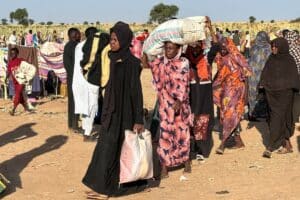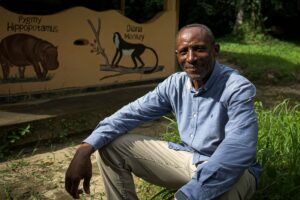In West Africa, cocoa farms are installed after the forest has been felled, whereas in Central Africa (Cameroon) cocoa trees are managed under shade, after the forest cover has been developed. This practice is the result of the transition of cocoa farming from “modern” companies to small farmers in the 1920s.
Over the years, these farmers have skilfully blended their knowledge of forest management, in which they have lived for centuries, with the agricultural practices of cocoa farming, which was introduced in Cameroon in 1886.
This harmonization allows them today to get food products, medicinal plants, plants for the manufacture of art objects and incomes from these agroforests, which is not the case in West Africa, especially in Côte d’Ivoire, the leading producer of cocoa with 40% of the world’s supply. In addition, these agroforests meet international environmental requirements, making them models for the promotion of agroforestry systems based on perennial crops in Central and West Africa.
The study presents the importance of cocoa agroforests in the forestry context and the synergy that has developed around the private and public sector partnership for the promotion of sustainable cocoa-based agroforestry systems in Central and West Africa.
Indeed, if in West Africa, cocoa farms are installed after the forest has been felled, in Central Africa they are managed in harmony with the trees by managing the forest cover to provide shade for the cocoa trees.
This multitude of components (cocoa trees and companion plants) gives these systems a certain flexibility of management and shock absorption.
Thus, in the face of socio-economic changes (drop in prices, devaluation of the CFA franc, liberalization of the agricultural sector) cocoa farmers will rely on companion trees of the cocoa tree by intensifying/diversifying them in the plantations.
The rational management of these trees (programmed sales of these woody species) brings additional income to the farmers and thus makes it possible to fight against poverty in rural areas; at the same time, it provides a response to the problem of global warming through the planting of trees.
Afforestation thus contributes to slowing down deforestation in West Africa, but it does not always make it possible to provide all the services offered by natural forests, which should not be destroyed unnecessarily.
EDOUKOU Adou
Sources :
– Course on Conservation and Management of the Environment at the Unesco Chair of the University of Abidjan Cocody (2010-2011) by Dr. EGNANKOU Wadja Mathieu
– Thesis submitted to the 7th World Forestry Congress. Quebec Ctity Canada by Sonwa Denis J., Weise Stephan F., Ndoye Ousseynou and Janssens Marc J.J.
– Univeristé Laval Québec Canada





